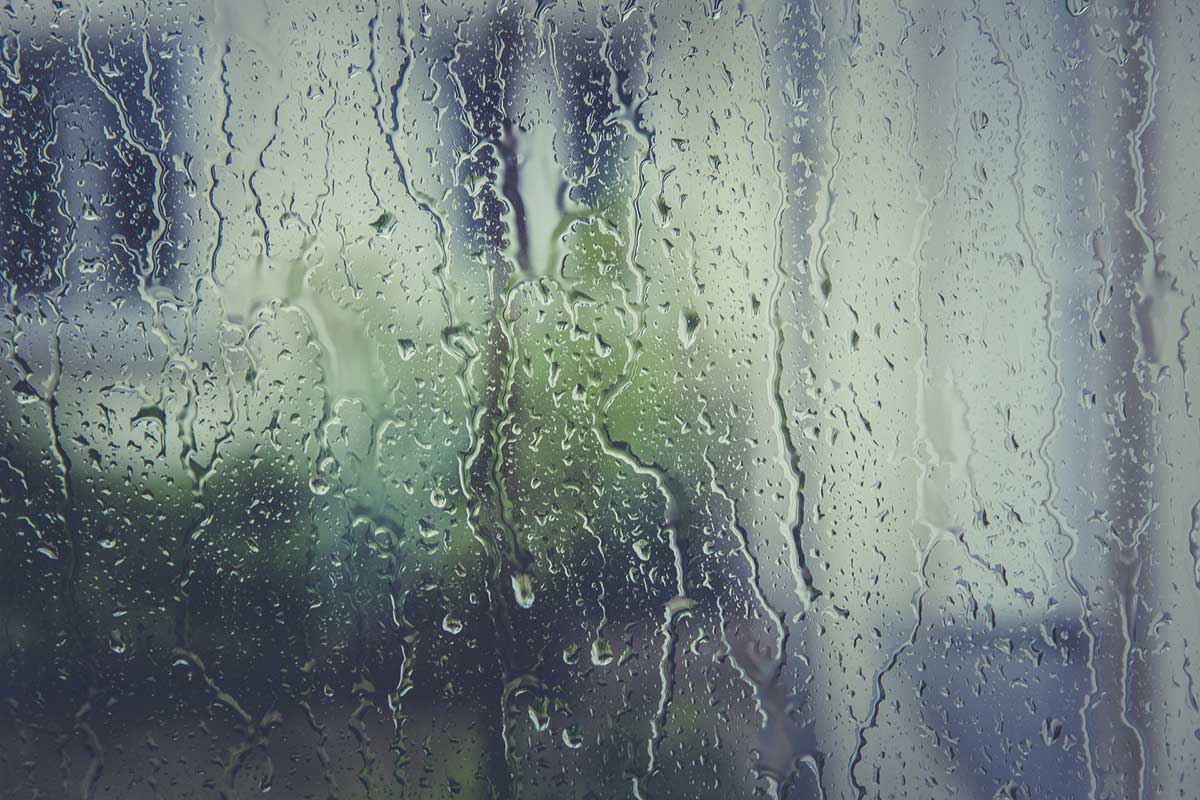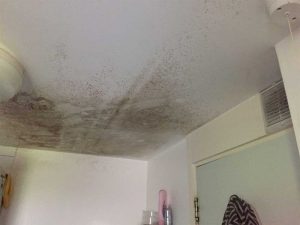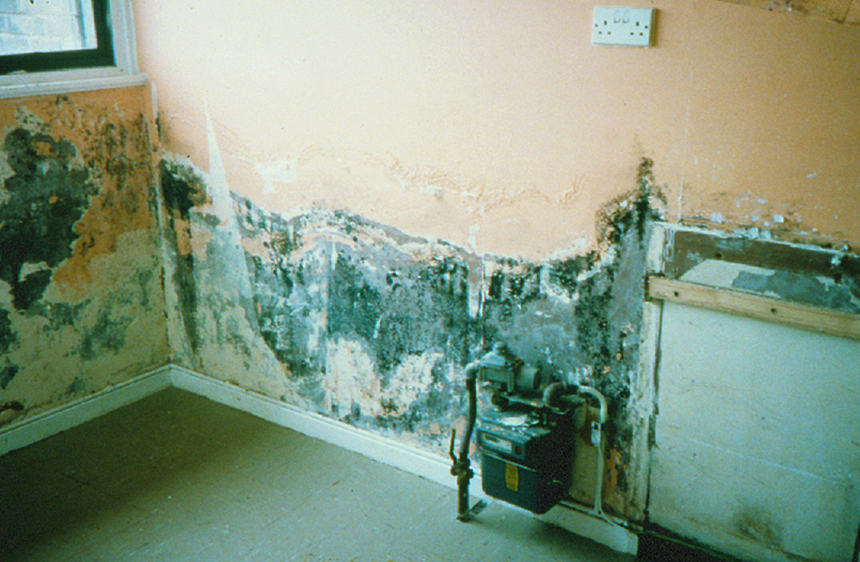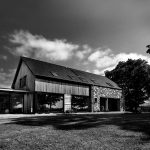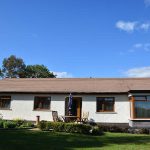Different types of damp and how to deal with it.
The most common source of damp in our wet and humid climate is condensation, and it happens when warm, moisture-laden air hits a colder surface. The amount of water held in the air rises and falls with room temperature so when warm air cools, water is slowly released in the form of condensation.
Having poor external wall insulation, no heating and poor ventilation in the room will exacerbate the problem by making surfaces cold. Should the surface be non-porous (like windows or tiles) it can form droplets. When surfaces are porous (like brickwork and plaster) it usually cannot be seen because it is absorbed. Houses with condensation problems are usually unhealthy to live in because fungi and bacteria thrive in the warm, humid air they create and can trigger many illnesses, including asthma.
Ventilation is the single best solution for dealing with condensation, preferably with a dedicated whole house system. Heating the house, making sure it has good heat retention (levels of insulation, draught-proofing) and generally cutting down on the production of moisture indoors will also lead to improvement.
Installing trickle vents on your windows is especially useful if you cannot open them, e.g. where noise or security issues are present. Trickle vents will create a cold draught so if you can afford it, consider the ones that are fitted with a moisture sensor.
If you can, when you are cooking, bathing or washing remember to open at least one window in the room, and closing the internal door to make sure the moist air exits the house through the open window, rather than propagate elsewhere within the house.
[adrotate banner="58"]Rising Damp
Many factors have an influence on whether damp rises in a wall and actually creates a problem, such as a defective damp proof course (DPC) or poor drainage outside. It is for this reason that rising damp generally affects older properties. The level of water penetration will be dependent on the porosity, width and construction of the wall, as well as the amount of moisture it is subjected to.
Damp proof courses/membranes were not introduced into houses until around the 1950s so if your house is older than this, the chances are it mightn’t have one, or alternatively, if one was fitted, it may now be working ineffectively. Indeed, in properties where there is rising or penetrating damp, there is often increased condensation due to moisture evaporating from damp walls.
In all cases, before you make any alterations, do everything you can to remove any potential sources of damp. Note that paints and coatings can provide some weatherproofing but if not breathable, may block interior moisture from escaping.
Ground and surface drainage surfaces butting up to the walls of your property should be angled slightly upwards so that rainwater drains away from the building or at least includes a rainwater channel to draw water away. If ground drainage is blocked, the property is at risk of flooding. In the USA it is common to have the ground fall away from the house walls at a 10 degree tilt downwards from the house. French drains consist of a perforated pipe below a bed of pea shingles, (gravel below 10mm in size), that leads to a drain.
Even without the drain, consider that pea shingles on their own are better at dissipating water than hard surfaces which tend to create higher splashes. If the problem persists you could then consult a remedial expert for advice before choosing one or more of the following solutions:
Tanking system. This method of removing excess water draws and tracks moisture to a single area in a room which is then pumped out. It does not prevent the rising damp from coming back so needs to be used in conjunction with another strategy.
Porous tube and hollow bricks. Porous tubes consist of a clay pipe inserted into holes drilled at a low level to increase the rate of evaporation and therefore limit the amount of moisture that can rise above them. Hollow bricks are similarly fixed to the outside wall of your house allowing dry air to flow for a permanent solution that can also help in eliminating, preventing and controlling damp regardless of its cause. Not all bricks work in the same way so talk to a remedial expert. Also know that these systems can clog over time with salts, which will limit their effect.
Other systems include an airpocketed sheet fitted to the inside of damp exterior walls to allow them to breathe. They are then replastered/drylined and finished with breathable materials. Less proven is the chemical damp-proof course which consists of a siliconebased liquid injected into a series of holes drilled into the wall to create a water-repelling layer. Electro-osmotic damp proofing is another not fully proven alternative whereby an electric charge is applied across a damp wall, the water molecules are drawn to the negative electrode rather than rising through the wall. The electrodes and wires are hidden beneath the mortar and connected to a power unit, which plugs into a standard 13amp socket and the system is earthed.
Penetrating Damp
Any damp which comes through the outer walls or roof. The main causes of it are poor fitting or broken elements attached to the exterior of the house. Victorian red brick was particularly susceptible because of its permeability, which means that driving rain tended to penetrate it, causing moisture ingress creating damp patches where there was poor insulation, heating and ventilation.
Repairing the source of water is generally accepted as the main solution, so check for broken guttering and signs of cracks in brickwork, renders and plinths, and for leaks which often occur at joints (grouting, washers, etc.) and lead to tide marks. When a chimney is not in use and closed off from the bottom, rainfall can no longer be dried by the updraught coming from the fireplace. This is more of a problem with old chimneys which have no horizontal damp tray.
The first signs of damp are often a yellow brown watermark on the wall of an upstairs room where the chimney breast is; this is the sulphur deposit from the inside of the chimney face leaching through the brickwork to the plaster. To prevent this and keep the wall dry, you can fit a ventilator towards the top of the original fireplace opening and a bird and rain proof cowl at the top.
If a chimney has damaged internal brickwork and failed mortar lining, it can be re-lined to enable use.
Temporary solutions: Replacing single glazed windows with double glazing and insulated frames, or thermally broken frames, will help around the window area (although if your property is listed or protected you won’t be permitted to replace single glazing). This will eliminate condensation on your windows but may transfer the moisture to the walls or clothing and leather items instead. Dehumidifiers can reduce the humidity in a room by collecting condensation in the air but again does nothing to get to the root of the problem. Special mould paints are available and can temporarily help too.
Disclaimer: This article is for information purposes only, consult a qualified building professional for your specific circumstances.

